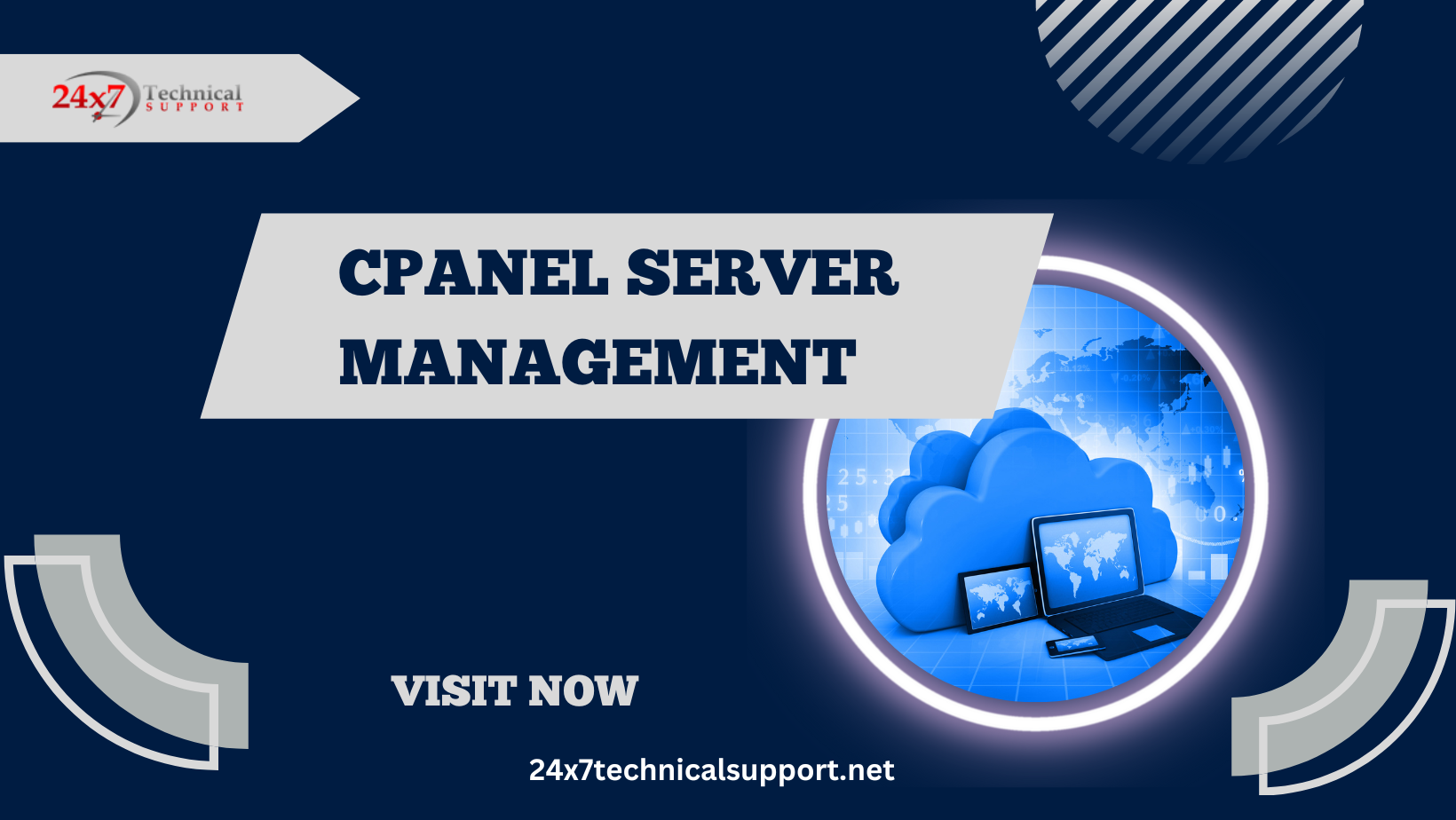
Introduction:
In the realm of web hosting, cPanel has established itself as one of the most popular control panels for managing servers. It’s user-friendly interface and robust features make it a go-to solution for both beginners and experienced administrators. In this blog, we will delve into the world of cPanel server management, exploring its key features, best practices, and tips for optimizing performance and security.
.png)
1. Understanding cPanel:
cPanel is a web-based control panel that simplifies server management tasks, allowing users to effortlessly navigate and manage various aspects of their hosting environment. From creating email accounts and managing domains to configuring security settings and monitoring server resources, cPanel provides a centralized platform for efficient server administration.
2. Key Features and Functionality:
a. Domain Management: cPanel offers intuitive tools for managing domains, including domain creation, redirection, and DNS zone configuration. It allows users to add add-on domains, subdomains, and parked domains with ease.
b. Email Management: With cPanel, users can create email accounts, manage mailing lists, set up forwarders and autoresponders, and implement email filters to enhance spam protection.
c. File Management: The File Manager feature enables users to upload, download, and modify files on the server, eliminating the need for external FTP clients. It supports file compression, permissions management, and folder synchronization.
d. Database Management: cPanel provides support for popular database systems such as MySQL and PostgreSQL. It offers tools for creating databases, managing users, and executing SQL queries efficiently.
e. Security and Backup: cPanel includes robust security features, such as SSL certificate management, IP blocking, and password-protected directories. It also facilitates automated backups and restoration of website files and databases.
.jpg)
3. Best Practices for cPanel Server Management:
a. Regular Updates: Ensure that your cPanel installation is kept up to date with the latest patches and security fixes to protect against vulnerabilities.
b. Strong Passwords: Encourage users to set strong, unique passwords for their accounts to prevent unauthorized access.
c. Resource Monitoring: Keep a close eye on server resources, such as CPU usage, memory, and disk space, to identify potential performance bottlenecks and take proactive measures.
d. Firewall Configuration: Implement a robust firewall to restrict access to your server and only allow necessary ports and protocols.
e. Backup Strategy: Regularly back up website files, databases, and configuration settings to safeguard against data loss. Store backups on separate servers or cloud storage for added redundancy.
4. Performance Optimization:
a. Caching: Enable caching mechanisms, such as Opcode caching and object caching, to improve website performance and reduce server load.
b. Content Delivery Network (CDN): Integrate a CDN to distribute website content across multiple servers globally, reducing latency and improving page load times.
c. GZIP Compression: Enable GZIP compression on your server to reduce the size of transmitted data, resulting in faster page loading for visitors.
d. Minification: Compress and combine CSS and JavaScript files to minimize the number of HTTP requests and improve website performance.
e. Server Tweaks: Fine-tune server settings, such as PHP configurations, database query caching, and web server optimization, to maximize performance and resource utilization.
5. Security Measures:
a. Two-Factor Authentication (2FA): Enable 2FA for cPanel login to add an extra layer of security and protect against unauthorized access.
b. ModSecurity: Implement ModSecurity rules to detect and prevent common web application attacks, such as SQL injection and cross-site scripting (XSS).
c. SSL/TLS Encryption: Secure communication between clients and your server by installing SSL certificates and enforcing HTTPS connections.
d. Regular Audits: Conduct periodic security audits to identify vulnerabilities, update software versions, and implement additional security measures as needed.
e. User Permissions: Assign appropriate permissions to users, limiting their access to only the necessary resources and reducing the risk of accidental or intentional damage.
Conclusion:
Effectively managing a cPanel server requires a combination of technical expertise, regular maintenance, and adherence to best practices. By harnessing the power of cPanel’s feature-rich interface, implementing robust security measures, and optimizing performance, you can ensure a seamless hosting experience for yourself and your clients. Stay vigilant, stay up to date, and let cPanel be your trusted companion in server management.
Visit us for Dedicated Support.